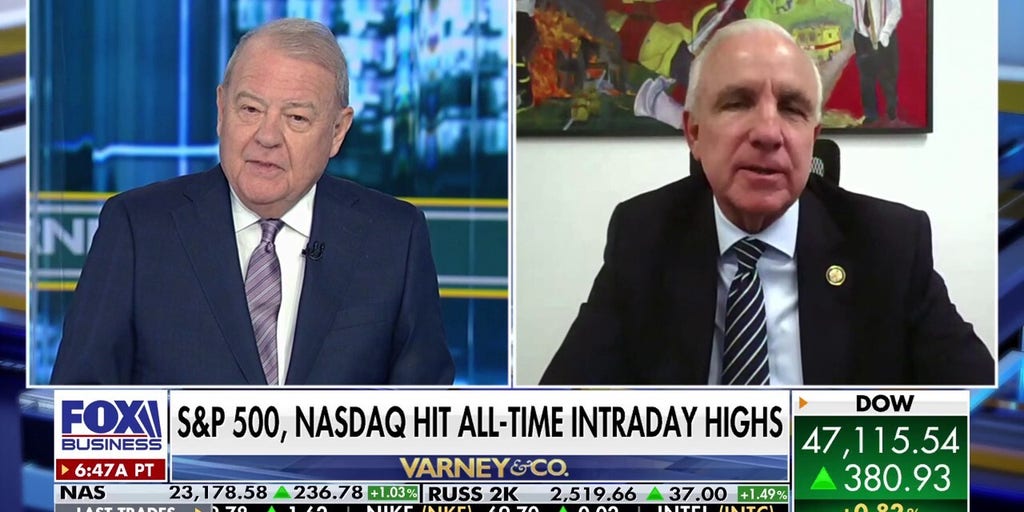“Growing pains.”
That’s how Harvard scholar Keyu Jin describes the problems afflicting the world’s second-largest economy. “China’s economic woes,” she writes in Nikkei Asia, “are less a sign of stagnation and more akin to growing pains—inevitable hurdles on the path of transformation.”
Yes, every economy faces difficulties, especially developing ones. But China’s are intractable. Because Xi Jinping is determined to take the country in an unsustainable direction, China is entering, as some call it, a “doom loop.”
“China’s economy is confronting a crisis unlike any it has experienced since it opened its economy to the world more than four decades ago,” the New York Times reported in September.
Why is the crisis so severe? For starters, China is currently having its 2008 downturn.
In 2008, China’s President Hu Jintao and Premier Wen Jiabao decided they would not allow the economy to suffer, so they embarked on perhaps the biggest stimulus program in history.
The result was historic overbuilding, and the country now has too much of almost everything. For instance, He Keng, a former senior statistics official, in 2023 publicly revealed that China had enough vacant apartments to house the entire population of 1.4 billion people. He noted that some believed that empty homes could hold three billion.
To deal with the severe imbalance, some Chinese localities are demolishing newly completed but vacant apartment buildings. Yet this is only a temporary fix. After all, destroyed buildings cannot produce revenue to pay for their construction and demolition.
“Without paying for the bad investments—largely real estate—the economy can’t grow,” says Anne Stevenson-Yang of J Capital Research, author of Wild Ride: A Short History of the Opening and Closing of the Chinese Economy. “And it definitely can’t pay for the bad investments. At least within the next decade.”
The crisis will almost certainly last a long time. “China has grown almost entirely through capital investment,” notes Stevenson-Yang. “Because there isn’t enough to invest in, a lot of good money chases bad, and they have reached a limit. The Chinese economy is having a heart seizure.”
The seizure looks fatal. China’s total-country-debt-to-GDP ratio is extraordinarily high. After taking into account so-called “hidden debt” and adjusting for inflated GDP claims—the country did not grow anywhere near the reported 5.0 percent pace last year—the ratio could be, according to my estimate, 375 percent. Higher figures are also plausible.
HECTOR RETAMAL / AFP/Getty Images
Even if the economy last year grew at the claimed pace, it would not have grown fast enough to pay back debt.
And China is now losing altitude. “China’s economy is in a slow grind downwards,” Andrew Collier of Hong Kong-based Orient Capital Research and Harvard’s Kennedy School told me in the middle of last year.
As a result, money has been flooding out of the country. According to the State Administration of Foreign Exchange, net foreign direct investment fell by $168 billion last year, the biggest drop since 1990. Also, illicit outflows are draining large amounts of cash. “Based on trade flows, capital flight appears to have reached operatic levels,” Stevenson-Yang says.
Pessimism is pervasive in China, not so much because the country is having a downturn but because people believe Xi Jinping is taking it in the wrong direction. His plan is to export his way out of economic difficulties, but as Nobel laureate Paul Krugman points out, foreign markets are not big enough for Xi’s plan to succeed. “We can’t absorb,” he says. “The world will not accept everything that China wants to export.”
President Donald Trump is certainly in no mood to accept more imports from China. On February 1, he imposed a 10 percent across-the-board tariff on China in response to its role in pushing fentanyl in America. On Thursday, he announced an additional 10 percent levy on the country. Last year while campaigning for president, he promised tariffs of at least 60 percent on Chinese goods.
Moreover, Trump’s February 13 presidential memorandum on reciprocal tariffs—outlining measures that could be announced in the first days of April—will substantially decrease China’s access to the American market.
New American tariffs will give cover to other leaders to also block Chinese goods. Even before Trump took the oath of office, the European Union imposed tariffs on China’s electric vehicles and Global South countries such as Indonesia, Brazil, and Turkey imposed tariff and other barriers. Expect more countries to follow.
Furthermore, China’s export plan is running into the problem of deglobalization—a worldwide delinking of economies. Global merchandise trade took a hit in 2023, dropping 1.2 percent. When final numbers come in for last year, there will be little improvement from the 2023 result.
China must also worry about something that former treasury secretary Janet Yellen called “friendshoring.” U.N. Trade and Development, formerly UNCTAD, reported in December 2023 that, since the first quarter of 2022, trade between “geopolitically close” countries, as measured by U.N. voting records, increased over 6 percent and trade between both “geopolitically distant” and “geopolitically very distant” countries dropped more than 4 percent. The trend apparently has continued since then.
As China, with provocative and belligerent conduct, pushes away countries, it is narrowing its base of potential customers.
Xi Jinping, therefore, is assaulting his own economy. China is experiencing more than just “growing pains.”
Gordon G. Chang is the author of Plan Red: China’s Project to Destroy America and The Coming Collapse of China. Follow him on X @GordonGChang.
The views expressed in this article are the writer’s own.


